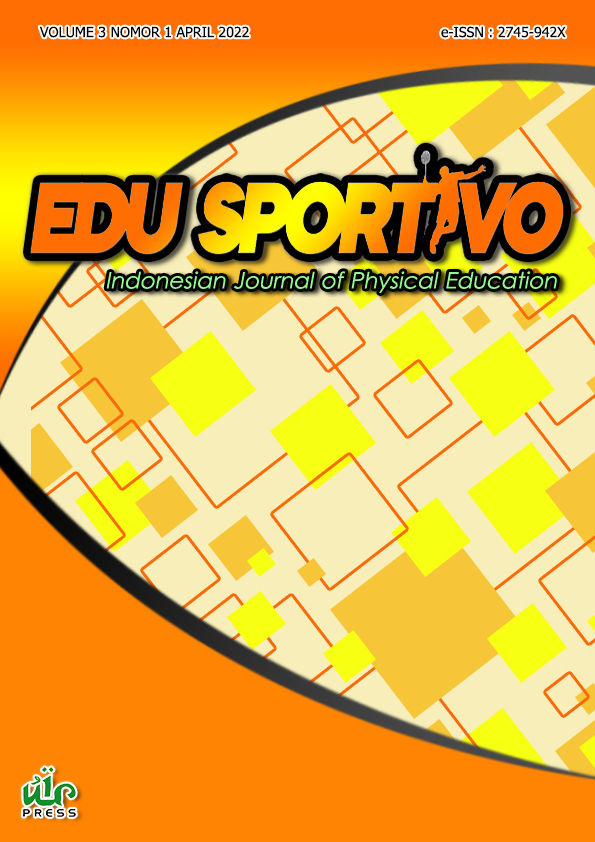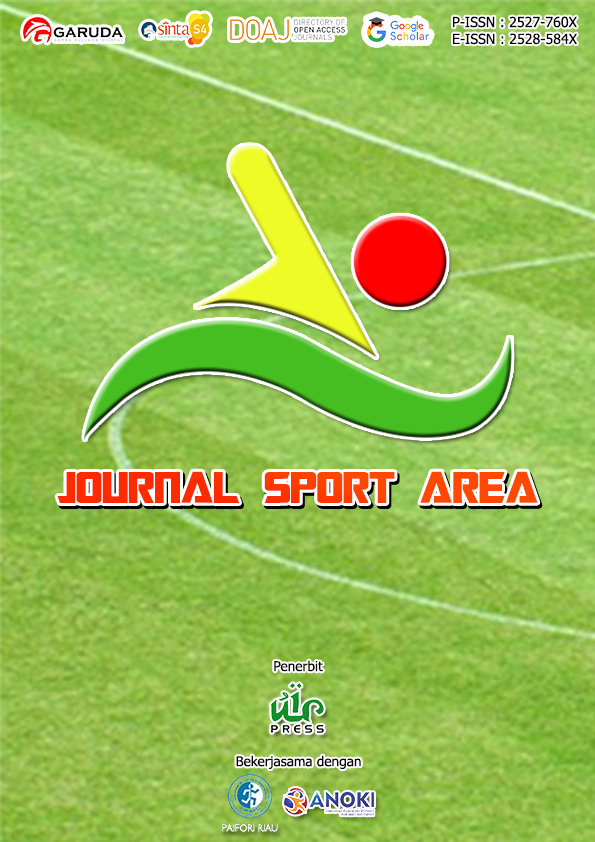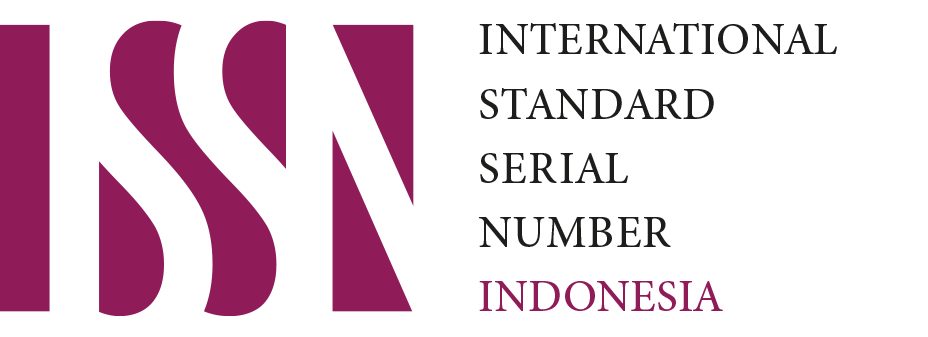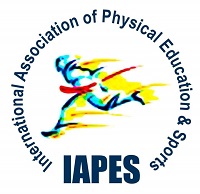The hidden curriculum in a Filipino pre-service physical educators’ virtual ecology
Keywords:
Hidden curriculum, pre-service, physical educators’, physical education, virtual ecologyAbstract
The study was geared toward determining the factors embedded in “hidden curricula” in an online learning environment of a physical education teacher education program. This qualitative-descriptive study considered a complete enumeration of the Bachelor of Physical Education students from a state university in Pampanga, Philippines who voluntarily participated in this qualitative investigation (n = 135) by responding to structured and open-ended questions. Aided by Thematic Analysis, findings revealed six emerging themes that described the embedded hidden curricula in the online learning environment, namely: contributory factors in an online learning experience (OLEx); educational opportunities in the new normal learning set-up; unfavorable factors in using online learning environment; and proposed inputs in enhancing the teaching-learning process in an OLEx. The implications derived as an outgrowth of the identified positive and negative factors as expressed by the participants provided a conceptual understanding of the contemporary picture of the hidden curricula and how it would define the future of an effective online learning experience.
Downloads
References
Aghaee, N., & Keller, C. (2016). ICT-supported peer interaction among learners in Bachelor’s and Master’s thesis courses. Computers and Education, 94, 276–297. https://doi.org/10.1016/j.compedu.2015.11.006
Ainscough, L., Stewart, E., Colthorpe, K., & Zimbardi, K. (2018). Learning hindrances and self-regulated learning strategies reported by undergraduate students: identifying characteristics of resilient students. Studies in Higher Education, 43(12), 21942209. https://doi.org/10.1080/03075079.2017.1315085
Bao, W. (2020). COVID ‐19 and online teaching in higher education: A case study of Peking University. Human Behavior and Emerging Technologies, 2(2), 113–115. https://doi.org/10.1002/hbe2.191
Barrot, J. S., Llenares, I. I., & del Rosario, L. S. (2021). Students’ online learning challenges during the pandemic and how they cope with them: The case of the Philippines. Education and Information Technologies, 26(6), 7321–7338. https://doi.org/10.1007/s10639-021-10589-x
Braun, V., & Clarke, V. (2012). Thematic Analysis Thematic Analysis. APA Handbook of Research Methods in Psychology, 2, 57–71.
Bray, M., Kobakhidze, M. N., Zhang, W., & Liu, J. (2018). The hidden curriculum in a hidden marketplace: relationships and values in Cambodia’s shadow education system. Journal of Curriculum Studies, 50(4), 435–455. https://doi.org/10.1080/00220272.2018.1461932
Çubukçu, Z. (2012). The effect of hidden curriculum on character education process of primary school students. Kuram ve Uygulamada Egitim Bilimleri, 12(2), 1526–1534.
De Giusti, A. (2020). Policy Brief: Education during COVID-19 and beyond. Revista Iberoamericana de Tecnología En Educación y Educación En Tecnología, 26, e12. https://doi.org/10.24215/18509959.26.e12
Dontre, A. J. (2021). The influence of technology on academic distraction: A review. Human Behavior and Emerging Technologies, 3(3), 379–390. https://doi.org/10.1002/hbe2.229
Eriksen, I. M. (2021). Class, parenting and academic stress in Norway: middle-class youth on parental pressure and mental health. Discourse, 42(4), 602–614. https://doi.org/10.1080/01596306.2020.1716690
Garrecht, C., Bruckermann, T., & Harms, U. (2018). Students’ decision-making in education for sustainability-related extracurricular activities: A systematic review of empirical studies. Sustainability (Switzerland), 10(11), 22-32. https://doi.org/10.3390/su10113876
Gaufberg, E. H., Batalden, M., Sands, R., & Bell, S. K. (2010). The hidden curriculum: What can we learn from third-year medical student narrative reflections? Academic Medicine, 85(11), 1709–1716. https://doi.org/10.1097/ACM.0b013e3181f57899
Gunio, M. J. (2021). Determining the influences of a hidden curriculum on students’ character development using the illuminative evaluation model. Journal of Curriculum Studies Research, 3(2), 194–206. https://doi.org/10.46303/jcsr.2021.11
Gustiani, S. (2020). Students’ motivation in online learning during covid-19 pandemic era : A case study. Holistics Journal, 12(2), 23–40.
Hartnett, M. (2016). The importance of motivation in online learning. Motivation in Online Education, 2007, 5–32. https://doi.org/10.1007/978-981-10-0700-2_2
Høgdal, C., Rasche, A., Schoeneborn, D., & Scotti, L. (2021). Exploring student perceptions of the hidden curriculum in responsible management education. Journal of Business Ethics, 168(1), 173–193. https://doi.org/10.1007/s10551-019-04221-9
Hviid, C. A., Pedersen, C., & Dabelsteen, K. H. (2020). A field study of the individual and combined effect of ventilation rate and lighting conditions on pupils’ performance. Building and Environment, 171, 106608. https://doi.org/10.1016/j.buildenv.2019.106608
Kromka, S. M., Goodboy, A. K., & Banks, J. (2020). Teaching with relevant (and irrelevant) storytelling in the college classroom. Communication Education, 69(2), 224–249. https://doi.org/10.1080/03634523.2019.1657156
Lawrence, K. C., & Fakuade, O. V. (2021). Parental involvement, learning participation and online learning commitment of adolescent learners during the COVID-19 lockdown. Research in Learning Technology, 29(1063519), 1–16. https://doi.org/10.25304/rlt.v29.2544
Lincoln, Y. S., & Guba, E. G. (1986). Trustworthiness and Naturalistic Evaluation. Program, 30. https://doi.org/10.1002/ev.1427
Lynn, M. R. (1986). Determination and quantification of content validity. In Nursing Research, 35(6), 382–386.
Mahood, S. C. (2011). Medical education: Beware the hidden curriculum. Canadian Family Physician Medecin de Famille Canadien, 57(9), 983–985.
Makarova, V., & Reva, A. (2017). Perceived impact of extra-curricular activities on foreign language learning in Canadian and Russian university contexts. Apples - Journal of Applied Language Studies, 11(1), 43–65. https://doi.org/10.17011/apples/urn.201704252075
Mina, J. C., Subia, G. S., Barlis, P. T., Tuliao, R. C., & Pastorfide, D. M. (2020). Inclinations of Engineering and Marketing Management Students to Engage in Online Learning Technology Amidst the COVID-19 Pandemic. 62(9), 24-35.
Munk, M., & Agergaard, S. (2018). Listening to students’ silences: A case study examining students’ participation and non-participation in physical education. Physical Education and Sport Pedagogy, 23(4), 371–386. https://doi.org/10.1080/17408989.2018.1441393
Noor, S., Ali, M. N., & Husnine, S. M. (2020). Performance of Online Classes in Lahore, Pakistan During Covid‐19. Performance Improvement, 59(9), 33–42. https://doi.org/10.1002/pfi.21938
Orón, S, J. V., & Blasco, M. (2018). Revealing the Hidden Curriculum in Higher Education. Studies in Philosophy and Education, 37(5), 481–498. https://doi.org/10.1007/s11217-018-9608-5
Peng, M. (2015). The Hidden Curriculum in Language Classrooms. Sino-US English Teaching, 12(6), 424–429. https://doi.org/10.17265/1539-8072/2015.06.003
Preece, S., & Bullingham, R. (2020). Gender stereotypes: the impact upon perceived roles and practice of in-service teachers in physical education. Sport, Education and Society, 0(0), 1–13. https://doi.org/10.1080/13573322.2020.1848813
Rotas, E. E., & Cahapay, M. B. (2020). Difficulties in Remote Learning: Voices of Philippine University Students in the Wake of COVID-19 Crisis. Asian Journal of Distance Education, 15(2), 147–158.
Sangra, A., Vlachopoulos, D., & Cabrera, N. (2012). Building an inclusive definition of e-learning: An approach to the conceptual framework. International Review of Research in Open and Distance Learning, 13, 145–159.
Shetty, S., Shilpa, C., Dey, D., & Kavya, S. (2022). Academic Crisis During COVID 19: Online Classes, a Panacea for Imminent Doctors. Indian Journal of Otolaryngology and Head and Neck Surgery, 74(1), 45–49. https://doi.org/10.1007/s12070-020-02224-x
Villanueva, I., Gelles, L. A., Stefano, M. Di, Smith, B., Lull, R. G., Lord, S. M., Benson, L., Hunt, A. T., Riley, D. M., & Ryan, G. W. (2018). What Does hidden curriculum in engineering look like and how can it be explored? ASEE Annual Conference and Exposition, Conference Proceedings, 2018-June. https://doi.org/10.18260/1-2--31234
Wang, T. (2009). Educational benefits of multimedia skills training. 2009 International Association of Computer Science and Information Technology - Spring Conference, IACSIT-SC 2009, 25–29. https://doi.org/10.1109/IACSIT-SC.2009.67
Winter, J., & Cotton, D. (2012). Making the hidden curriculum visible: Sustainability literacy in higher education. Environmental Education Research, 18(6), 783–796. https://doi.org/10.1080/13504622.2012.670207
Yemen-Karpuzcu, S., Ulusoy, F., & Işıksal-Bostan, M. (2017). Prospective middle school mathematics teachers’ covariational reasoning for interpreting dynamic events during peer interactions. International Journal of Science and Mathematics Education, 15(1), 89–108. https://doi.org/10.1007/s10763-015-9668-8
Published
How to Cite
Issue
Section
This is an open-access article distributed under the terms of the Creative Commons Attribution-ShareAlike 4.0 International License which permits unrestricted use, distribution, and reproduction in any medium. Users are allowed to read, download, copy, distribute, search, or link to full-text articles in this journal without asking by giving appropriate credit, provide a link to the license, and indicate if changes were made. All of the remix, transform, or build upon the material must distribute the contributions under the same license as the original.
Accepted 2022-03-02
Published 2022-03-24



.png)




















.png)







.png)





